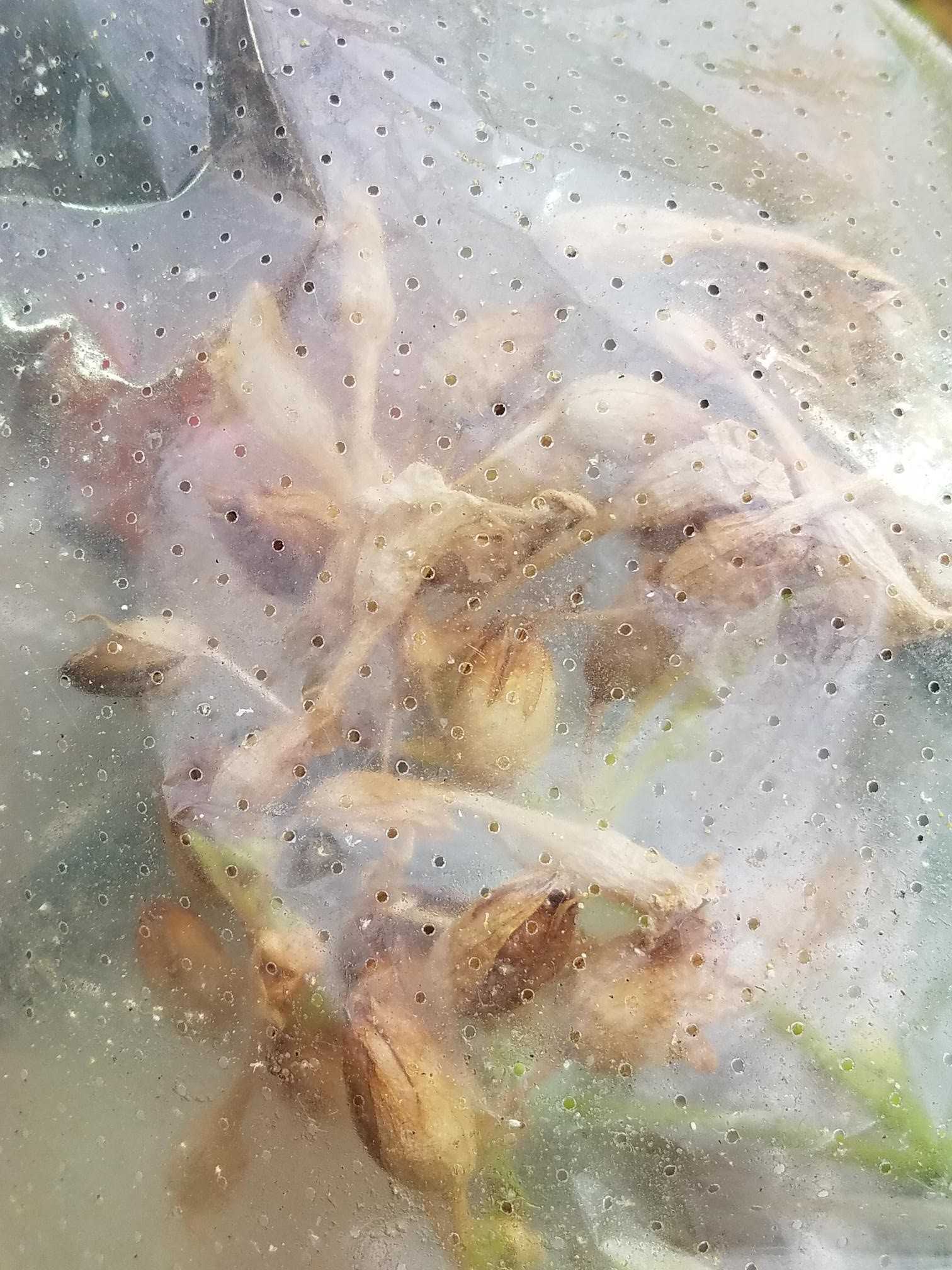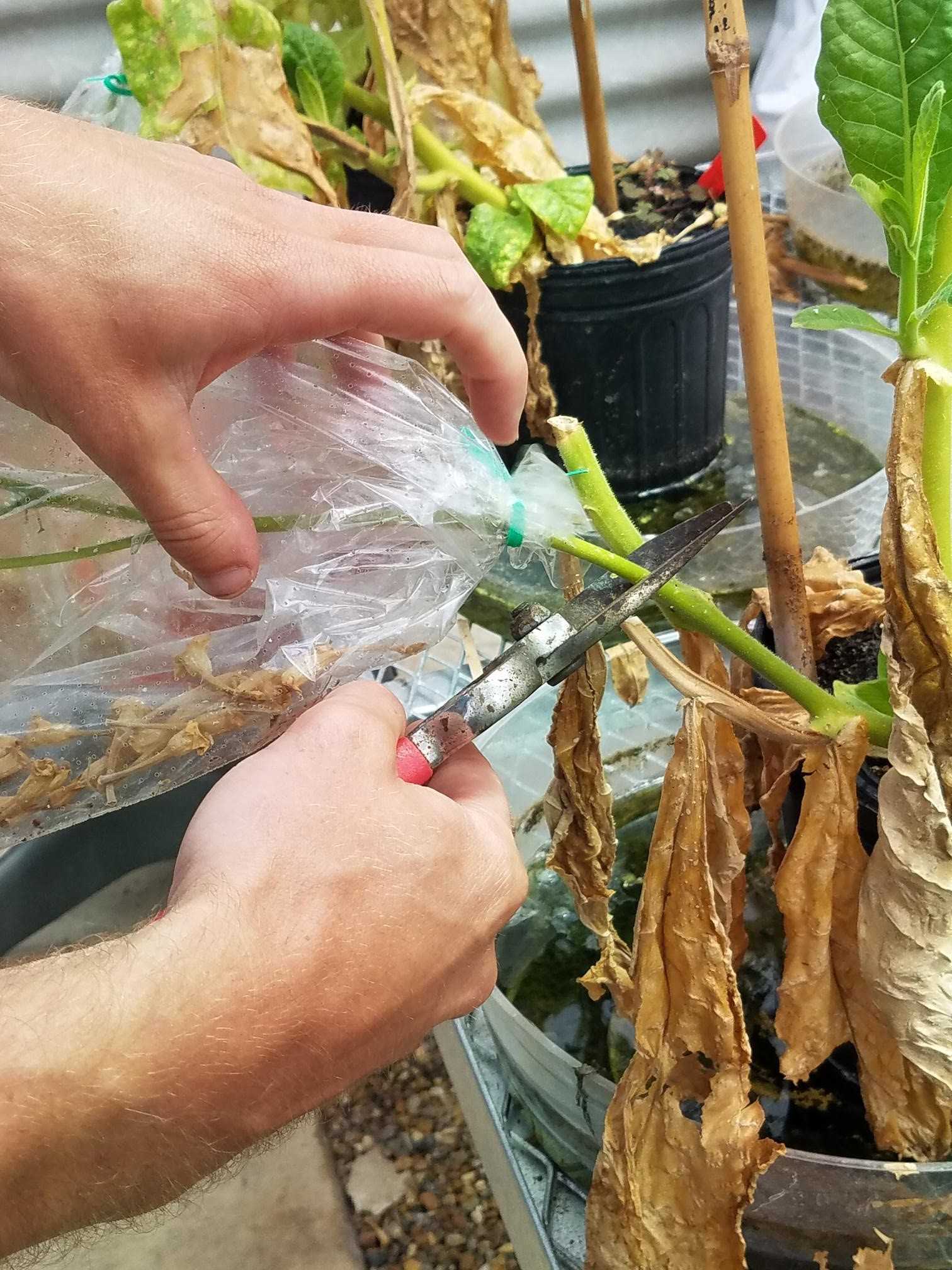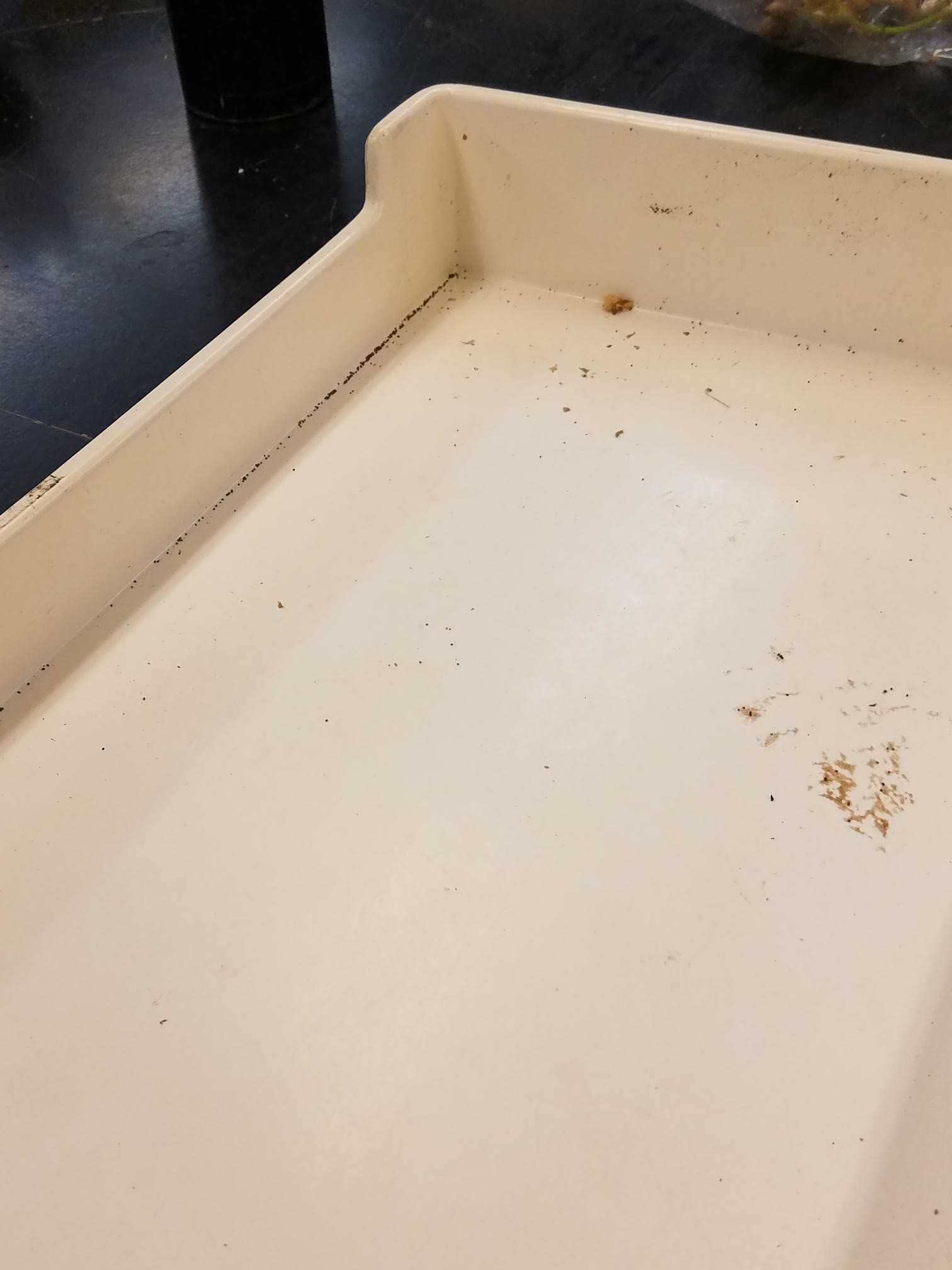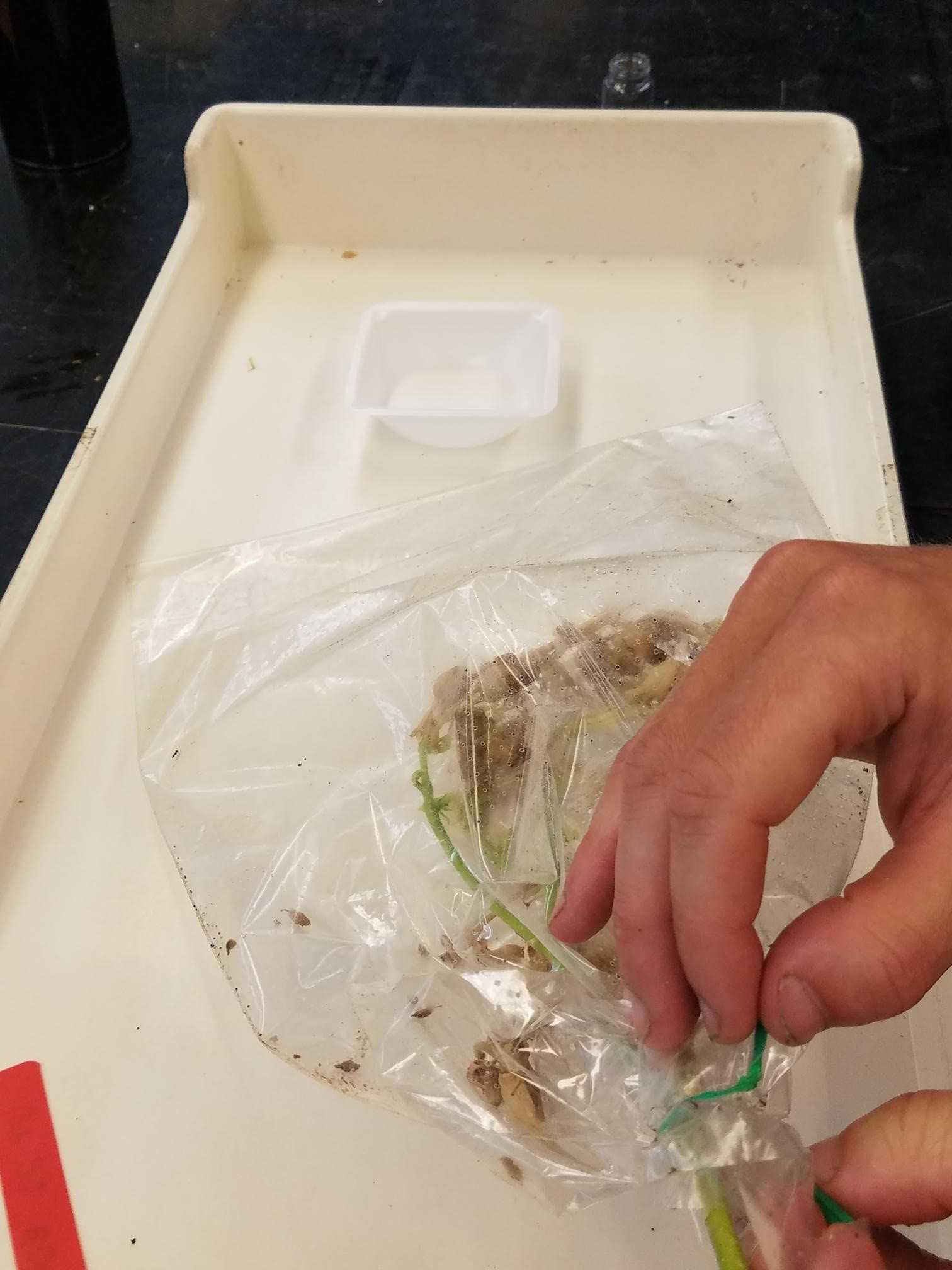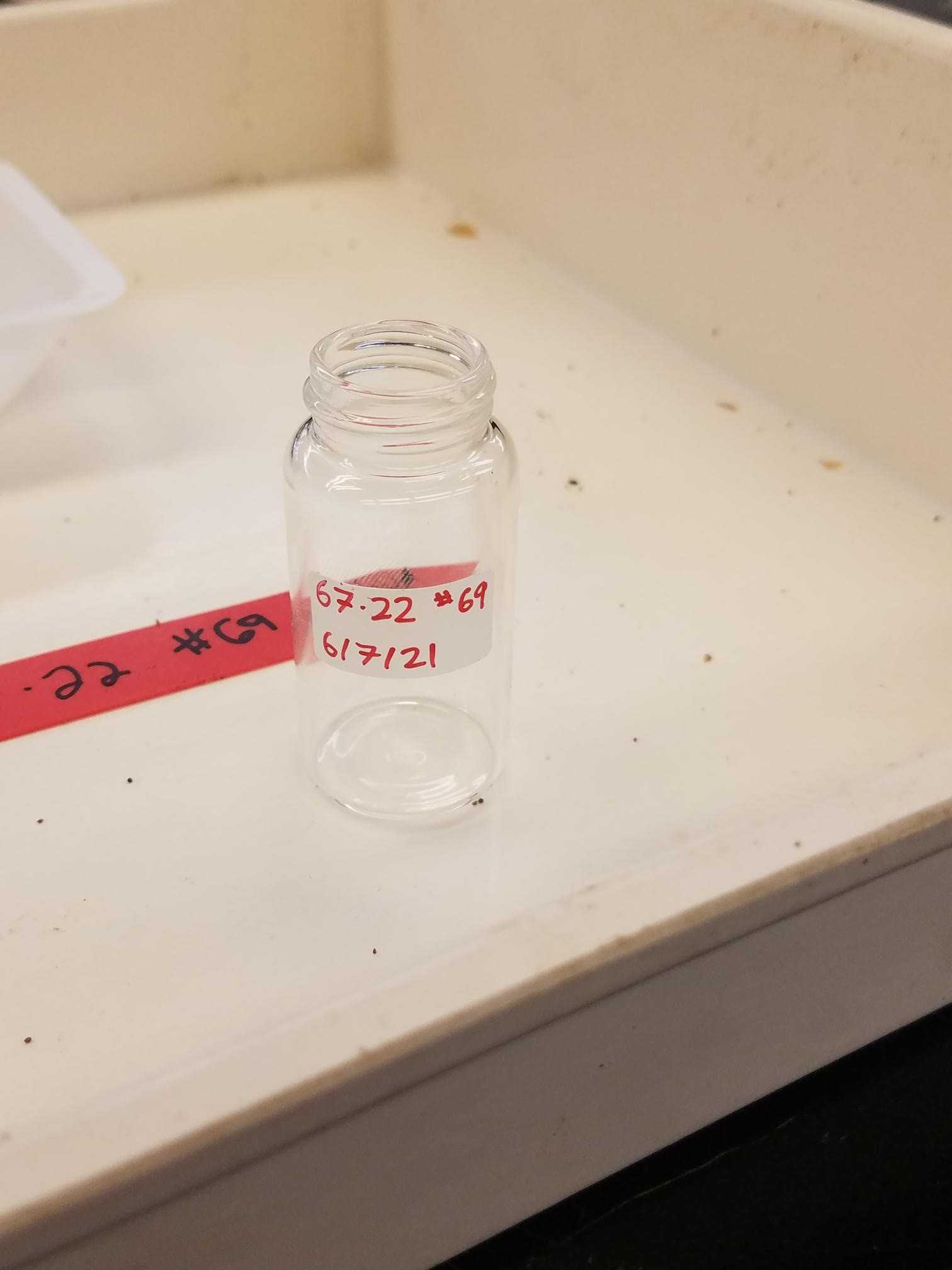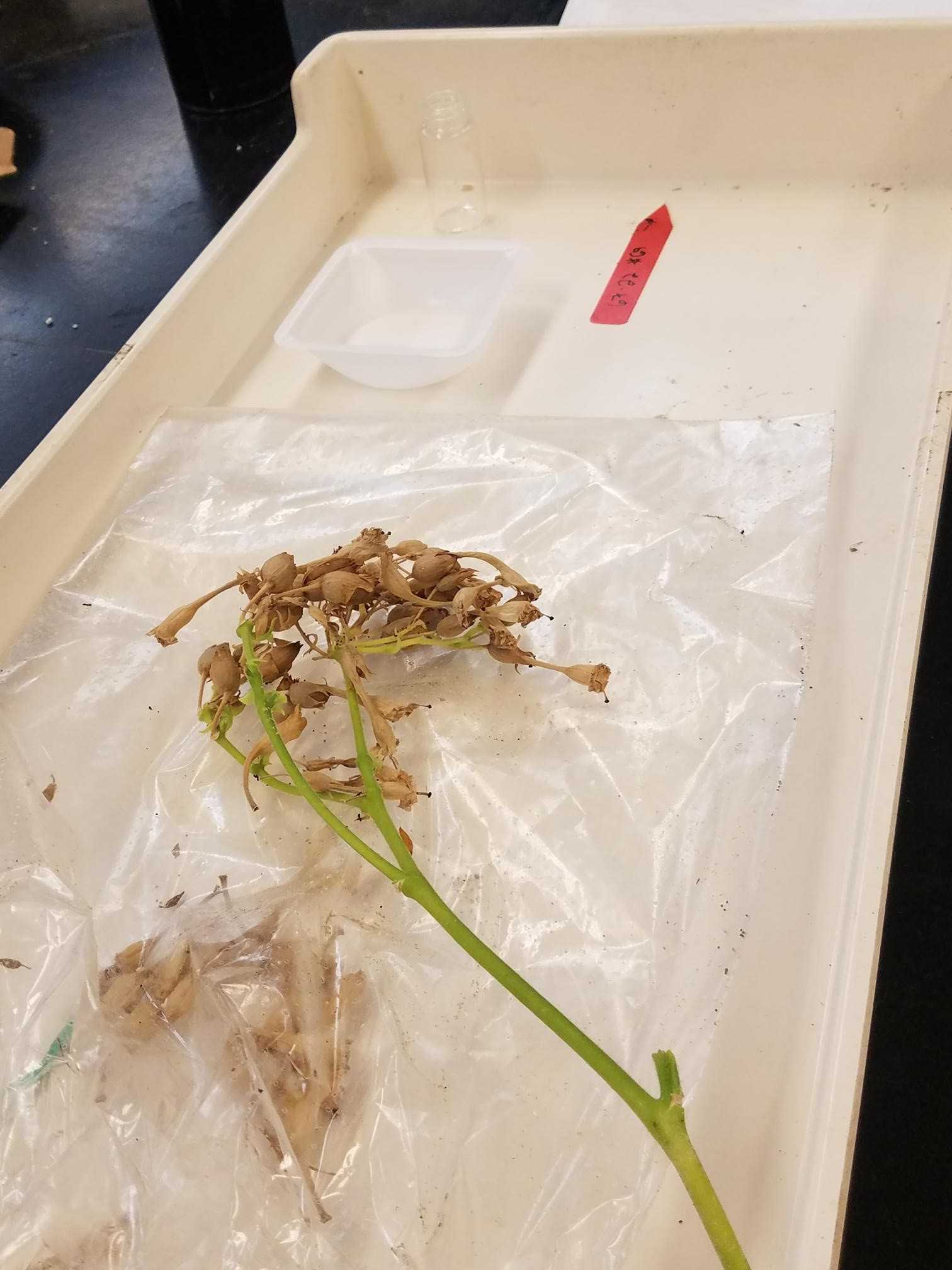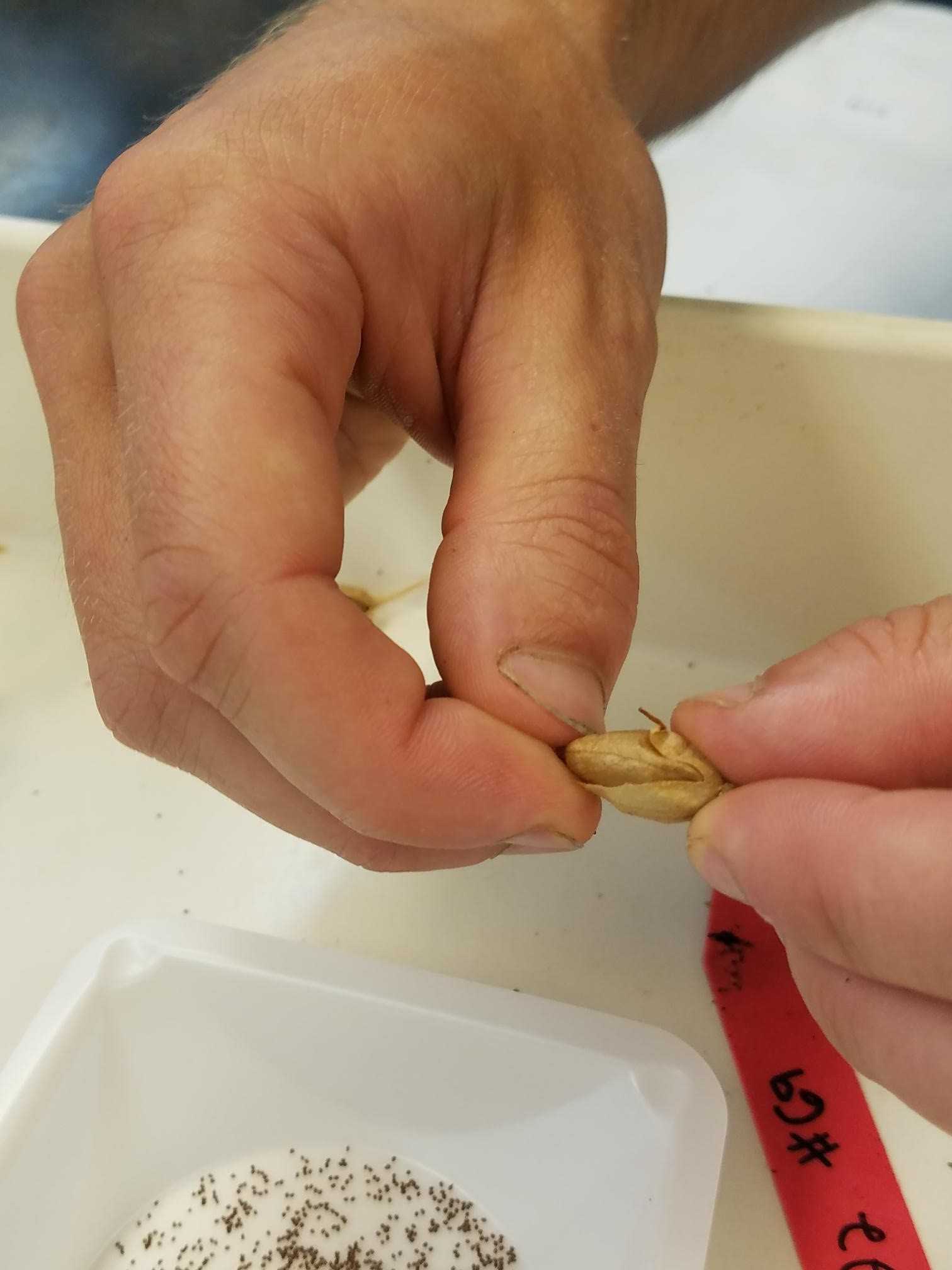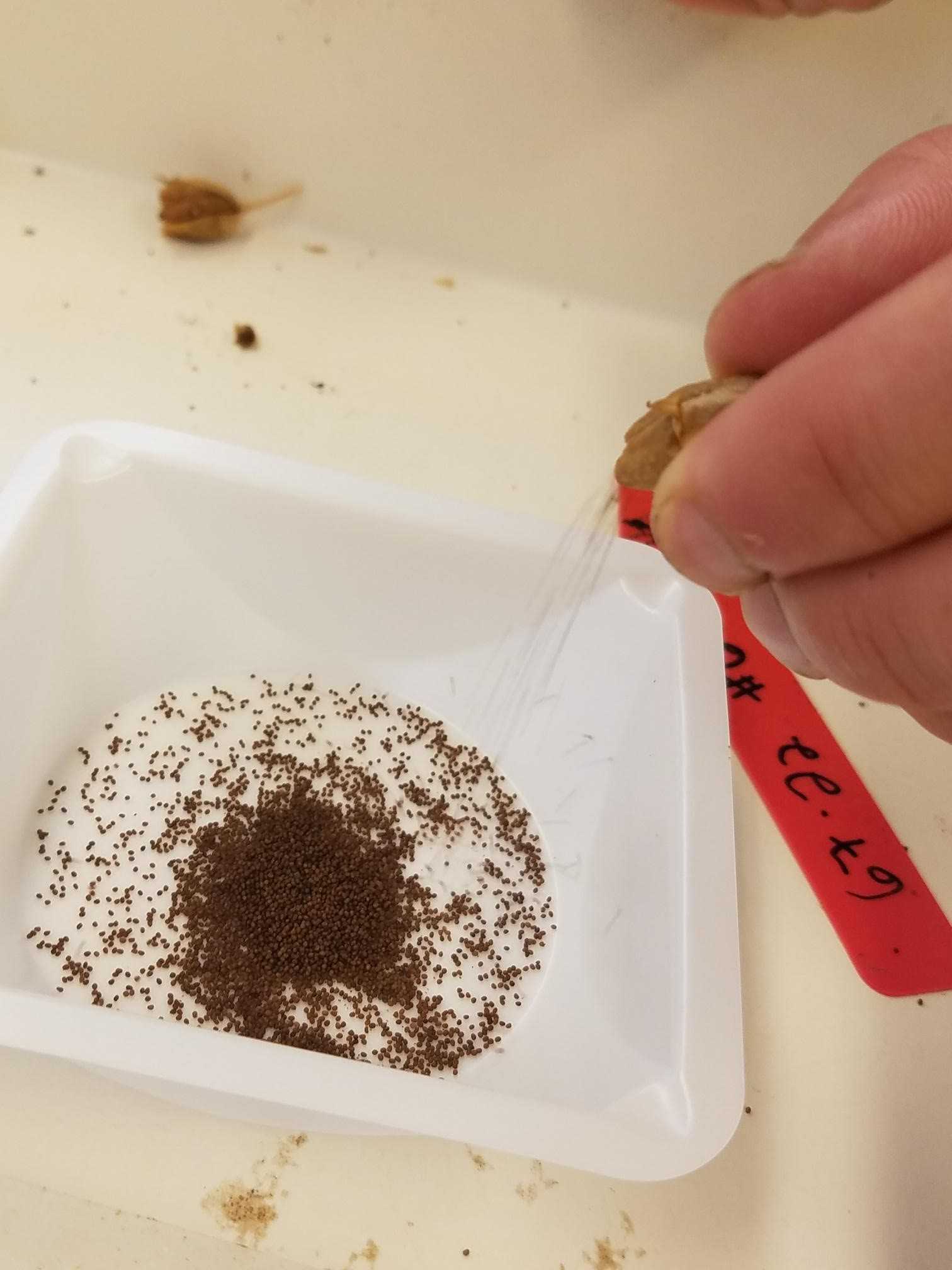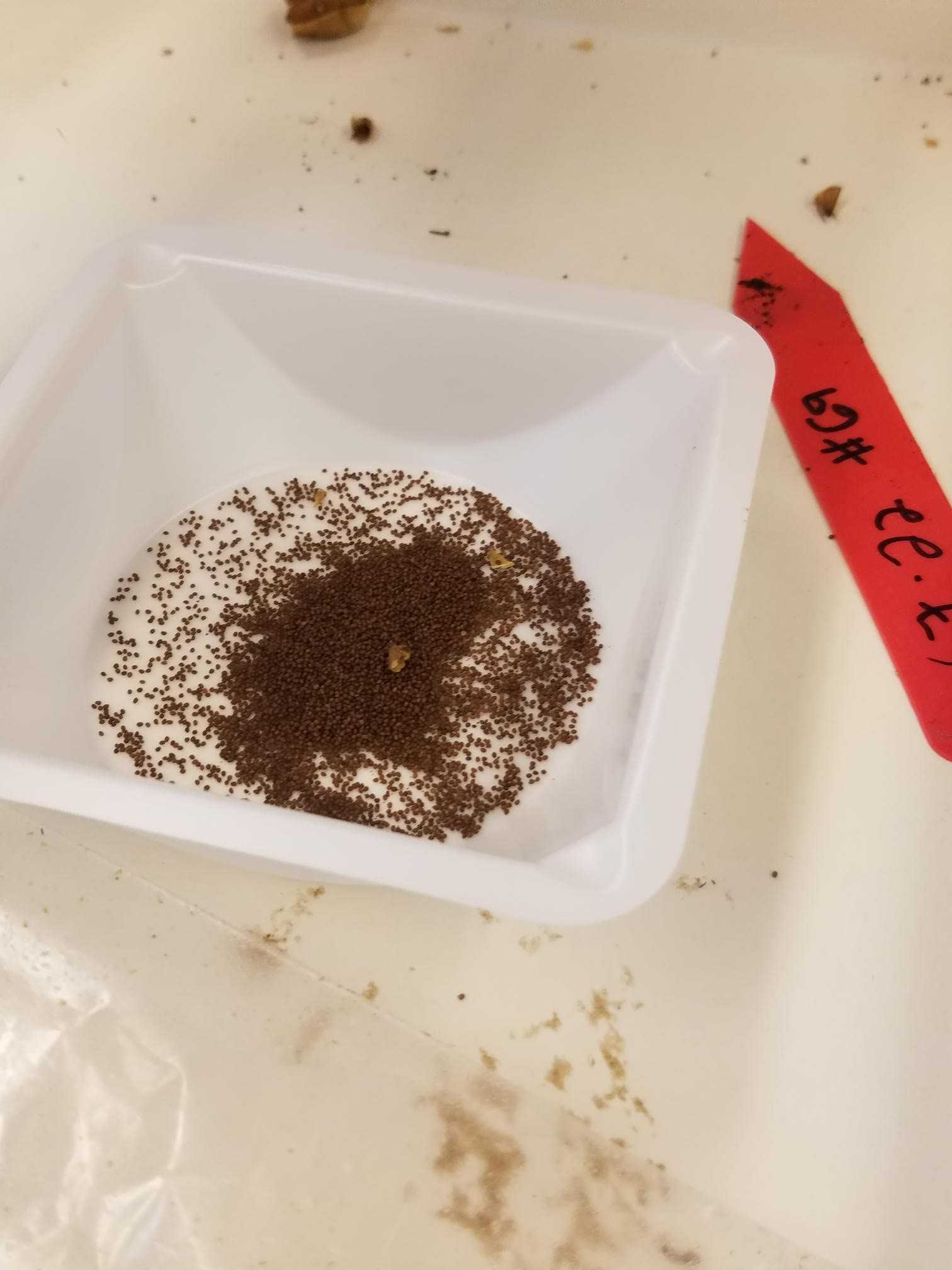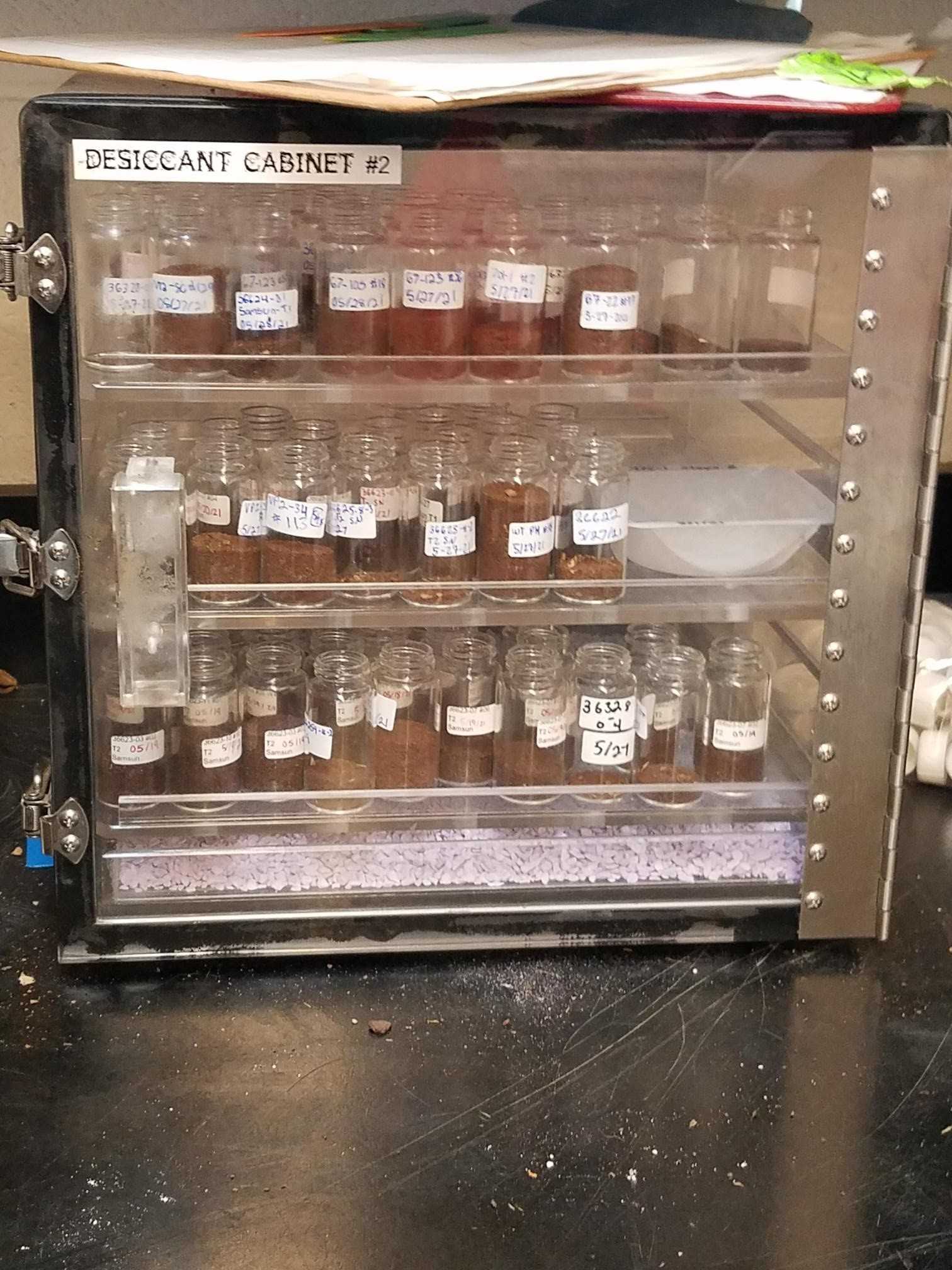Harvesting Tobacco Seeds
Lynn Doran
Abstract
Protocol for harvesting seeds from research tobacco plants.
Before start
If harvesting from transgenic plants, review all USDA-APHIS requirements for the RIPE APHIS permit for handling transgenic materials before beginning any experiment.
Steps
Inspect pollinating bag for any damage that could indicate cross-pollination. Discard any plants that look like the pollination bag may have been damaged.
Place a new weigh boat into the seed tray.
Repeat step 9 with additional seed pods until a sufficient amount of seed has been collected.
Remove any chaff or plant matter from the seeds using tweezers. If the plant is transgenic, discard chaff and plant matter into the biohazard bin.
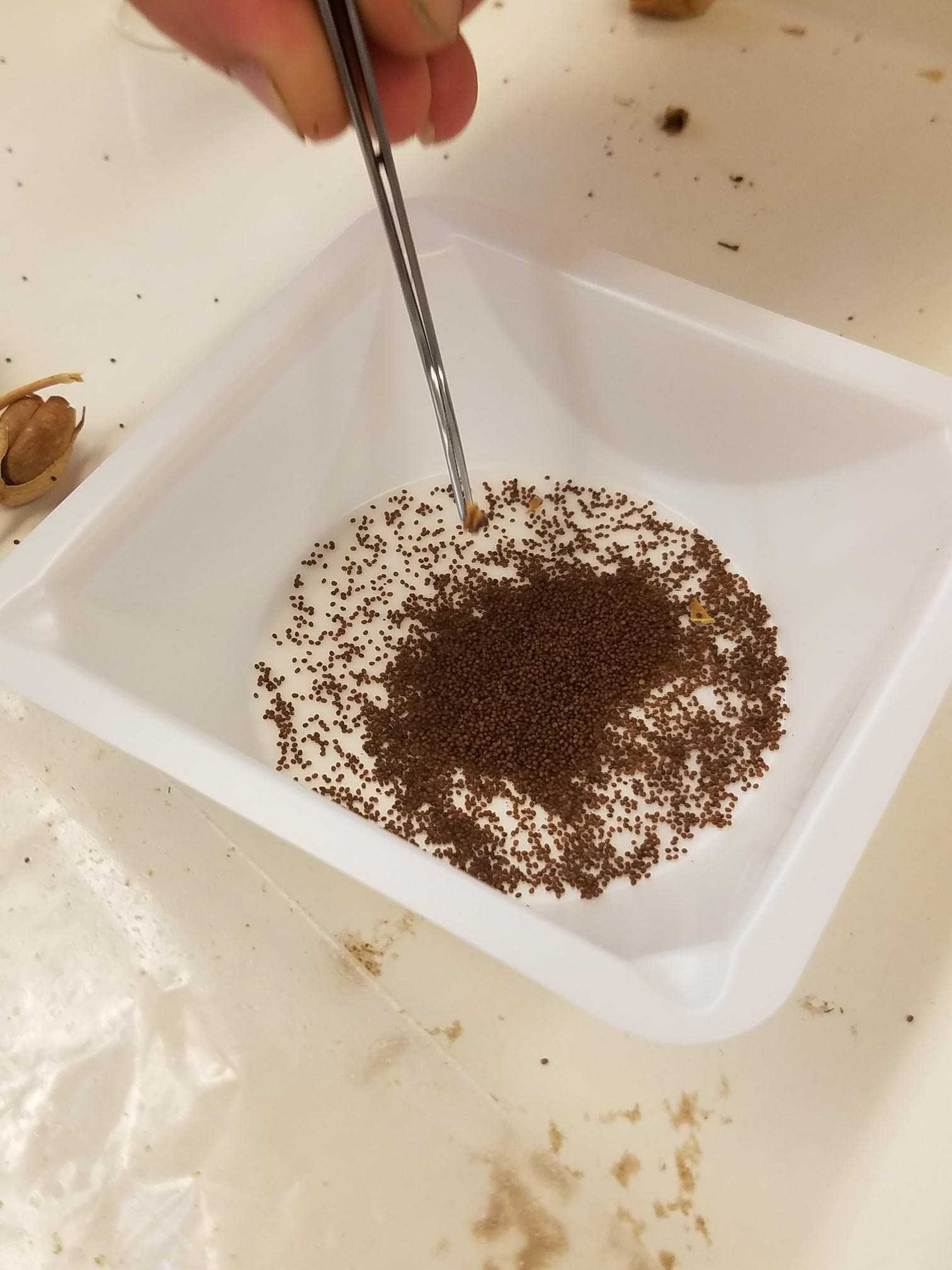
If plants are transgenic, discard any remaining seeds, plant parts, pollination bags, and weigh boats into the biohazard bin. Clean and sterilize all tools, counters, and hands with 70% ethanol. Discard any paper towels used to clean materials containing transgenic seeds into the biohazard bin.
If plants are not transgenic, thoroughly cleaning between harvesting of individual plants is still highly recommended to avoid seed cross-contamination.
After the seed has been allowed to dry for a minimum of 7 days, pull out the last seed box for that species according to the Master Seed Library (login required) from the seed cooler.
Add seed vials sequentially to the last seed box. Assign numbers both sequentially and enter all seed vial data in the Master Seed Library. When a seed box is full, start a new tab for that species in the alphabetically sequential order and begin numbering vials numerically sequentially starting with the letter name of the seed box they are in and the number 1.
